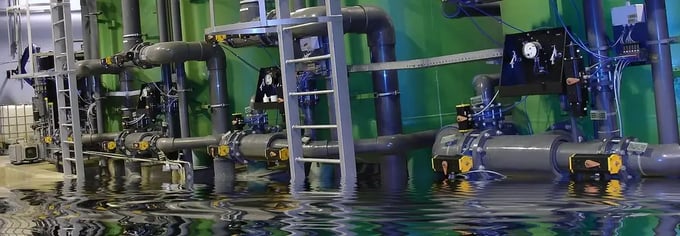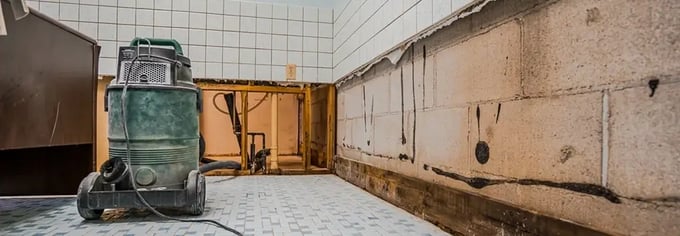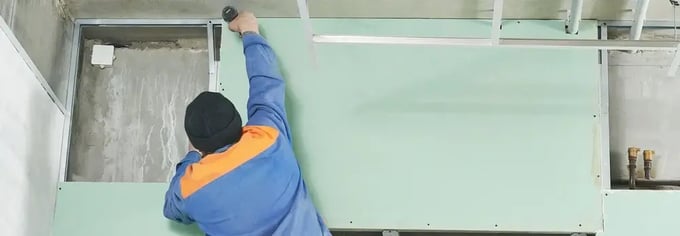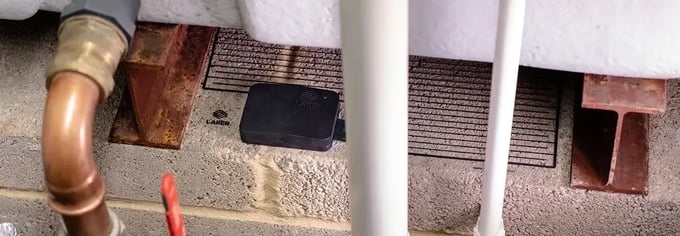Facilities managers and commercial landlords often overlook managing the indirect costs of water consumption and the water infrastructure in their buildings. This can be a significant issue. This includes the carbon cost and overall environmental impact of water.
Research and data on carbon emissions from public water infrastructure is plentiful. However, information on emissions from the water after it is delivered to buildings is much more limited.
We're already beginning to feel climate change's very real financial costs. However, we still struggle to calculate the impact of our choices and, consequently, any ability to control rapidly rising risk levels on our buildings.
We've gathered what we know about this topic and put it together in this short article. We aim to help you assess the carbon costs of the water in your building and start taking steps to protect your facility and reduce costs, both carbon and financial.

It's hard to think of carbon costs when everything's suddenly underwater
The difficulty of accounting for the carbon cost of water is most evident when there's a flood.
Floods are almost always sudden and impact many things at the same time. Our standard response to an event like this is prioritizing a return to "normal." Insurers and government bylaws almost always reinforce this approach.
Both commonly focus on assessing cost-effectiveness. They do this quickly with the aim of repairing or replacing the building and its contents. Payment is usually required for this process.
And while insurers are beginning to build the effects of climate change into their models, this is still a relatively new innovation for the insurance industry.
The result is that building managers and owners are put under pressure to avoid anything that adds to time or cost.
Moving quickly can be problematic. It can lead to collateral effects. This has made it difficult to introduce better preventative measures. This approach also tends to work against efforts to address climate change, which demands a more considered relationship between people and the planet.

A limited amount of data is available on how this bears out with the carbon cost of flooding in commercial buildings.
That said, we gain a glimpse of understanding when looking at related data. A study conducted in England on residential homes illustrates some significant sources of emissions and waste when trying to recover from flood damage, including
- The landfill waste of flooded homes is roughly equal to the waste produced by a typical house in an entire year.
- The energy needed to dry out a house and its content is upwards of 3 tonnes, or around 33% over the average of a UK home's carbon emissions.
- Buildings being stripped out in unnecessarily wasteful ways because of a lack of understanding about building materials and available resources to fix them, as well as a desire to be expedient.
These costs will need to be considered going forward, on top of the elevated risk of buildings flooding because of climate change, which we can't control. A US study found that flood damage costs are likely to double in the coming years if the planet continues to heat up on its current trajectory.
The connection between water and carbon, particularly leaking water, is one we can't ignore. Suppose the world is to even make a dent in the goal to create a net-zero world by 2050. In that case, we need to develop better ways of measuring and managing the associated carbon emissions of water. We also want to prevent disasters like floods from derailing our efforts and sending the financial costs of recovery skyward.

This is a difficult situation. At a time when the effects of climate change are raising the risks of flooding and other damage to our buildings, we need to find better ways to prevent and mitigate further emissions from water damage.
What gets measured gets managed
If you have the resources to more deeply assess the carbon footprint of both your building's water usage, as well as your policy toward leaks – or if you're an insurance underwriter – you will find good value in investigating the carbon costs you carry and how you can get ahead of them before government policy or catastrophe, forces you consider them.
The good news is that you don't need to start with a blank page. Frameworks are already being developed to help you consider the indirect carbon costs of leaks and flooding. For example, the UK's Environment Agency has created easy-to-understand guidance.
While it is written with floods due to storms or natural disasters in mind, it is a helpful aid in grasping the situation's complexity. The guide includes factoring things such as the carbon cost of temporarily housing tenants and erosion that might occur around the building due to flooding.

You miss opportunities by replacing everything with 'standard' parts
Going back to the pressure to return things to 'normal' after flooding. While it is perfectly understandable, it has significant downsides. One is that it's often fastest to throw everything out 'just to be safe' without taking time to consider if it would be less destructive, cheaper, and more efficient to repair what you already have.
At the same time, if you're a company or insurer working within a restrictive budget, it is tempting to go with whatever is considered 'standard' when replacing parts and fittings. For instance, there is a growing market for fixtures and fittings that can reduce wasted water and the energy needed to move and heat water.
This kind of decarbonization of water requires planning and consideration that goes beyond the often oversimplified financial equation we use when our buildings and homes are flooded. Many new and growing technologies could help us create a net-zero world. But, to grow, they need to be chosen and invested in by facilities and building managers who use them.
Stop leaks before they get going
According to the Association of British Insurers (ABI), water leaks are the most common insurance claim for properties. It costs the UK millions daily. Amongst the guidance ABI offers, high on the list is to use leak detection devices, which they mention may also be considered when calculating insurance premiums.
Leak detection sensors,like the ones we make here at LAIIER, have two big benefits:
- The latest water sensors can be configured to detect tiny amounts of water – a few drops. They can predict and warn you that something is broken or failing long before any water can damage your building.
- Sensors integrated into networked systems are usually designed to monitor large and complex spaces hard for technicians to reach or see. These sensors can give you a centralized 'view' of an entire building (or buildings) when deployed. They will remotely inform you of leaks that might take technicians weeks or months to notice. As we've written about previously, these are often the most costly leaks, so finding them can reduce your carbon emissions and save money.